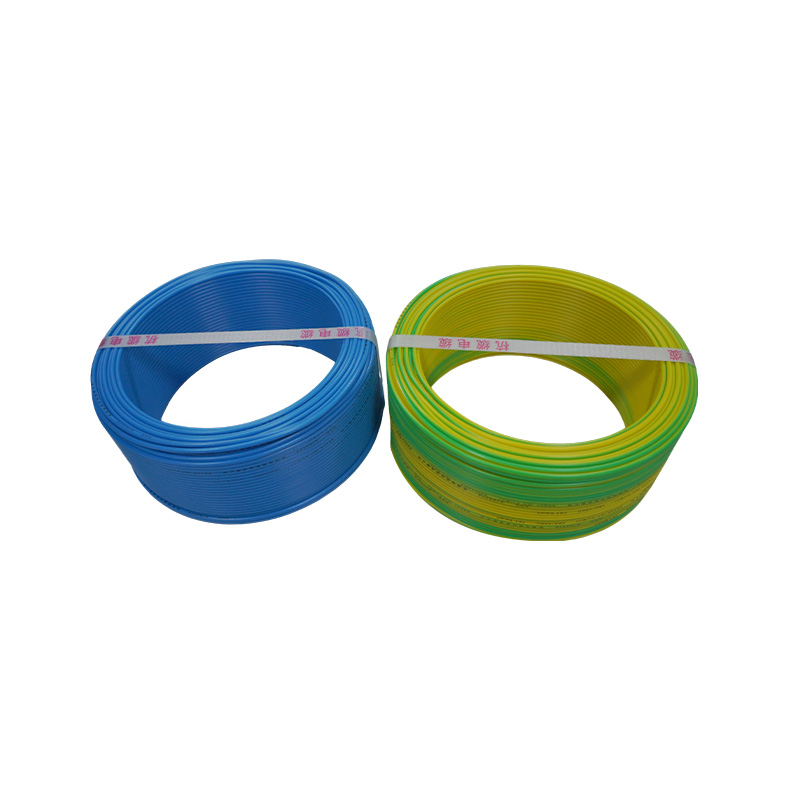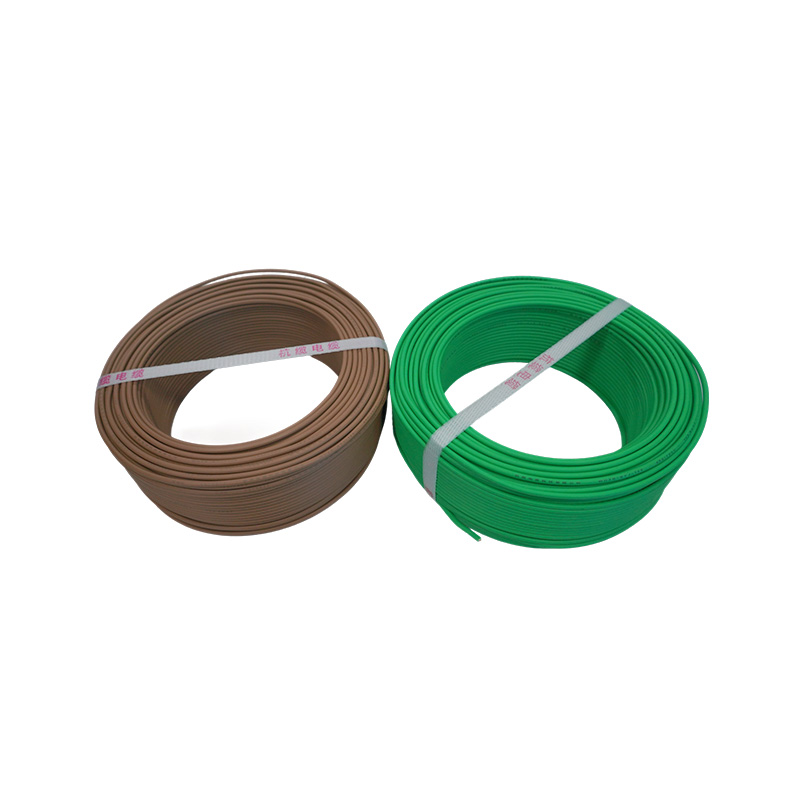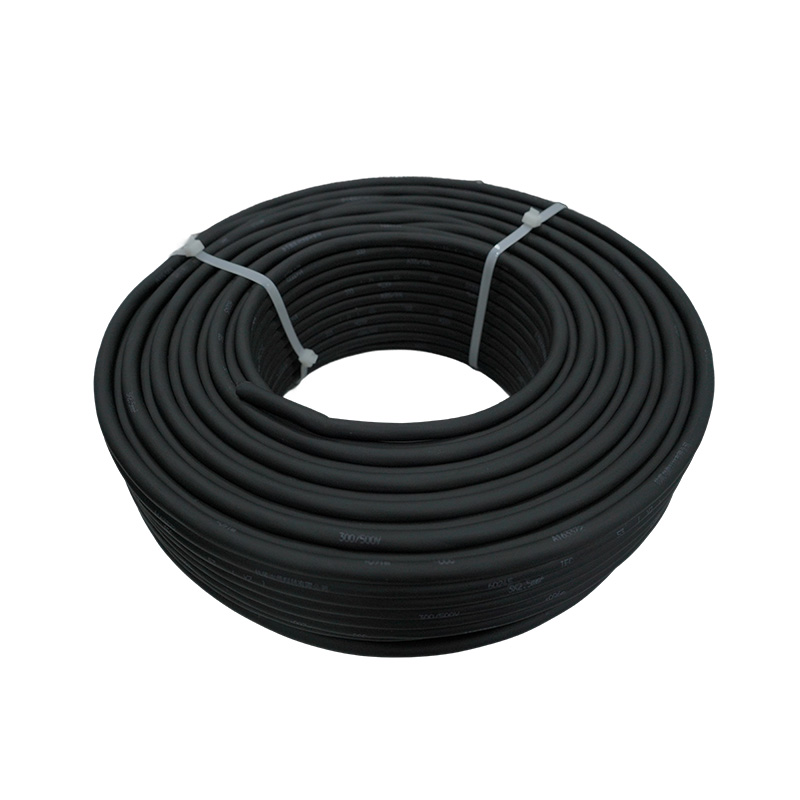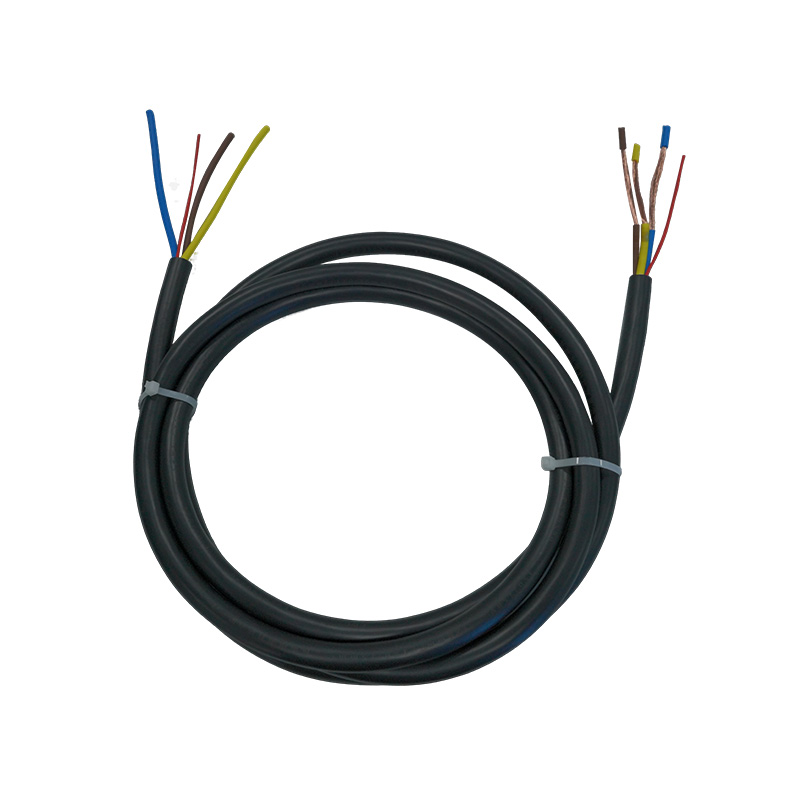How does cross-linked polyolefin insulated wire improve its electrical conductivity?
Release Time : 2025-10-03
In modern high-rise buildings, subway hubs, hospitals, airports, and other locations where safety and reliability are paramount, the stable operation of power systems is directly related to the safety of people and property. As the core carrier of power, lighting, and fire emergency lines, wires must not only possess safety features such as flame retardancy and fire resistance, but also maintain efficient electrical conductivity over long-term operation. Cross-linked polyolefin insulated wire, thanks to its unique material structure and advanced manufacturing process, is becoming the preferred choice for high-end building electrical systems. It not only surpasses traditional PVC wire in terms of safety but also demonstrates significant advantages in improving electrical conductivity, providing a solid foundation for green and efficient power consumption in modern buildings.
1. Higher Temperature Resistance: Unleashing the Conductor's Current-Carrying Potential
The electrical conductivity of a wire is not solely determined by the copper conductor itself; the heat resistance of the insulation layer is also crucial. Traditional PVC-insulated wire has a long-term operating temperature of only 70°C. When current flows through the conductor, heat is generated. If the temperature approaches or exceeds the insulation's maximum limit, not only does it accelerate aging, but it also necessitates a reduction in current carrying capacity to ensure safety, resulting in "idle capacity." Cross-linked polyolefin insulated wire uses electron accelerator radiation cross-linking technology to form a three-dimensional network structure of polyethylene molecular chains, significantly improving thermal stability. It can operate at temperatures up to 125°C for extended periods and withstand temperatures as high as 250°C for short periods of overload.
This characteristic means that, given the same cross-section, cross-linked polyolefin wire can carry greater current without overheating. According to current-carrying capacity calculation standards, under the same conditions, cross-linked polyolefin wire has a current carrying capacity 20% to 30% higher than PVC wire. This not only improves power transmission efficiency but also allows designers to use smaller diameter cables while still meeting load requirements, saving copper and installation space, achieving a win-win situation in terms of both cost and efficiency.
2. Low dielectric loss: Reduced insulation energy loss
When transmitting power, in addition to "copper loss" caused by conductor resistance, the insulation material itself also generates "dielectric loss" due to the alternating electric field. Traditional PVC material has a strong polarity and a high dielectric loss tangent. This causes continuous heat generation during high-frequency or long-term operation, resulting in energy waste. Cross-linked polyolefin, a non-polar material with a stable molecular structure and extremely low dielectric loss, exhibits excellent dielectric properties at a 50Hz power frequency, generating virtually no additional heat loss. This allows more power to be efficiently transmitted to end devices, improving overall system energy efficiency.
3. High Dielectric Strength and Stability: Ensuring Continuous and Efficient Operation
After irradiation cross-linking, the cross-linked polyolefin insulation layer not only improves heat resistance but also significantly enhances its electrical insulation strength. It also maintains stable performance in high-temperature, humid, and ozone environments. This means that wires are less susceptible to partial discharge or insulation breakdown in complex building environments, reducing the risk of leakage, short circuits, and other faults caused by insulation degradation. This results in more stable system operation and reduced frequency of power outages for maintenance, indirectly improving the continuity and efficiency of power supply.
4. Structural Optimization and Improved Heat Dissipation
After cross-linking, cross-linked polyolefin material exhibits low shrinkage and dimensional stability, enabling thinner and more uniform insulation layers. This reduces the overall outer diameter while maintaining safe insulation distances. The more compact structure facilitates dense cable installation in cable trays or conduits, while also improving heat dissipation—heat is transferred more quickly from the conductor to the external environment, preventing heat accumulation and capacity degradation. Excellent heat dissipation further supports the continued utilization of high current-carrying capacity, forming a virtuous cycle of "high current → low temperature rise → improved heat dissipation → further high current."
5. Green and efficient, energy-saving throughout the entire lifecycle
Cross-linked polyolefin insulated wire utilizes a halogen-free, low-smoke, and flame-retardant formula. It emits no toxic hydrogen halide gas in a fire, resulting in low smoke density, saving valuable time for evacuation and fire rescue. Its service life of over 30 years far exceeds that of ordinary wire, reducing replacement frequency and resource waste. From a lifecycle perspective, its high conductivity, low maintenance costs, and environmentally friendly characteristics combine to create a truly "green and efficient" power solution.
Cross-linked polyolefin insulated wire fundamentally improves electrical conductivity through multiple technical advantages, including high-temperature resistance, low loss, high insulation, and excellent heat dissipation. Not only does it maximize every ampere of current, but it also safeguards the electrical lifeline of modern buildings with exceptional safety performance. In today's pursuit of "dual carbon" goals and urban safety upgrades, this high-efficiency, environmentally friendly, and long-lasting cable is becoming an indispensable "green artery" for smart buildings and public safety facilities.
1. Higher Temperature Resistance: Unleashing the Conductor's Current-Carrying Potential
The electrical conductivity of a wire is not solely determined by the copper conductor itself; the heat resistance of the insulation layer is also crucial. Traditional PVC-insulated wire has a long-term operating temperature of only 70°C. When current flows through the conductor, heat is generated. If the temperature approaches or exceeds the insulation's maximum limit, not only does it accelerate aging, but it also necessitates a reduction in current carrying capacity to ensure safety, resulting in "idle capacity." Cross-linked polyolefin insulated wire uses electron accelerator radiation cross-linking technology to form a three-dimensional network structure of polyethylene molecular chains, significantly improving thermal stability. It can operate at temperatures up to 125°C for extended periods and withstand temperatures as high as 250°C for short periods of overload.
This characteristic means that, given the same cross-section, cross-linked polyolefin wire can carry greater current without overheating. According to current-carrying capacity calculation standards, under the same conditions, cross-linked polyolefin wire has a current carrying capacity 20% to 30% higher than PVC wire. This not only improves power transmission efficiency but also allows designers to use smaller diameter cables while still meeting load requirements, saving copper and installation space, achieving a win-win situation in terms of both cost and efficiency.
2. Low dielectric loss: Reduced insulation energy loss
When transmitting power, in addition to "copper loss" caused by conductor resistance, the insulation material itself also generates "dielectric loss" due to the alternating electric field. Traditional PVC material has a strong polarity and a high dielectric loss tangent. This causes continuous heat generation during high-frequency or long-term operation, resulting in energy waste. Cross-linked polyolefin, a non-polar material with a stable molecular structure and extremely low dielectric loss, exhibits excellent dielectric properties at a 50Hz power frequency, generating virtually no additional heat loss. This allows more power to be efficiently transmitted to end devices, improving overall system energy efficiency.
3. High Dielectric Strength and Stability: Ensuring Continuous and Efficient Operation
After irradiation cross-linking, the cross-linked polyolefin insulation layer not only improves heat resistance but also significantly enhances its electrical insulation strength. It also maintains stable performance in high-temperature, humid, and ozone environments. This means that wires are less susceptible to partial discharge or insulation breakdown in complex building environments, reducing the risk of leakage, short circuits, and other faults caused by insulation degradation. This results in more stable system operation and reduced frequency of power outages for maintenance, indirectly improving the continuity and efficiency of power supply.
4. Structural Optimization and Improved Heat Dissipation
After cross-linking, cross-linked polyolefin material exhibits low shrinkage and dimensional stability, enabling thinner and more uniform insulation layers. This reduces the overall outer diameter while maintaining safe insulation distances. The more compact structure facilitates dense cable installation in cable trays or conduits, while also improving heat dissipation—heat is transferred more quickly from the conductor to the external environment, preventing heat accumulation and capacity degradation. Excellent heat dissipation further supports the continued utilization of high current-carrying capacity, forming a virtuous cycle of "high current → low temperature rise → improved heat dissipation → further high current."
5. Green and efficient, energy-saving throughout the entire lifecycle
Cross-linked polyolefin insulated wire utilizes a halogen-free, low-smoke, and flame-retardant formula. It emits no toxic hydrogen halide gas in a fire, resulting in low smoke density, saving valuable time for evacuation and fire rescue. Its service life of over 30 years far exceeds that of ordinary wire, reducing replacement frequency and resource waste. From a lifecycle perspective, its high conductivity, low maintenance costs, and environmentally friendly characteristics combine to create a truly "green and efficient" power solution.
Cross-linked polyolefin insulated wire fundamentally improves electrical conductivity through multiple technical advantages, including high-temperature resistance, low loss, high insulation, and excellent heat dissipation. Not only does it maximize every ampere of current, but it also safeguards the electrical lifeline of modern buildings with exceptional safety performance. In today's pursuit of "dual carbon" goals and urban safety upgrades, this high-efficiency, environmentally friendly, and long-lasting cable is becoming an indispensable "green artery" for smart buildings and public safety facilities.







